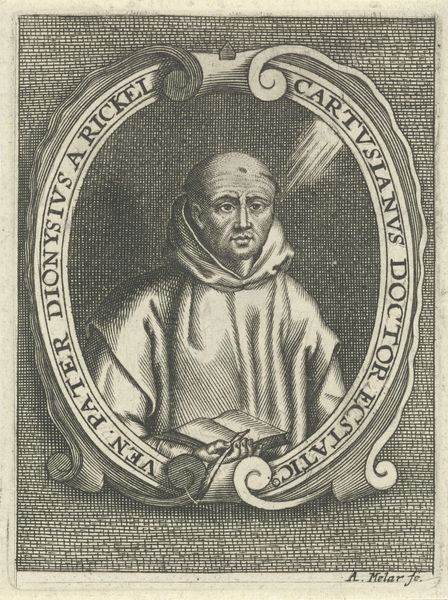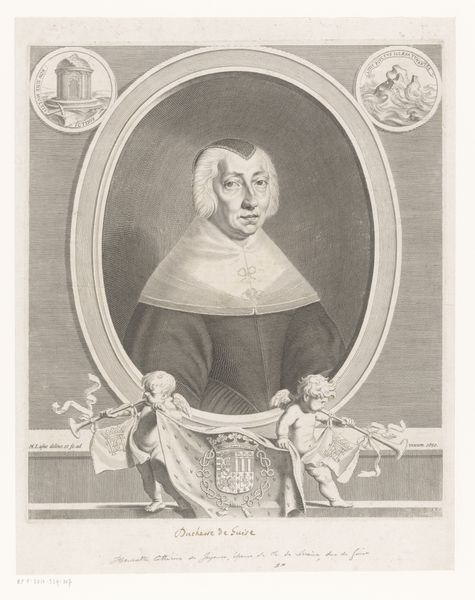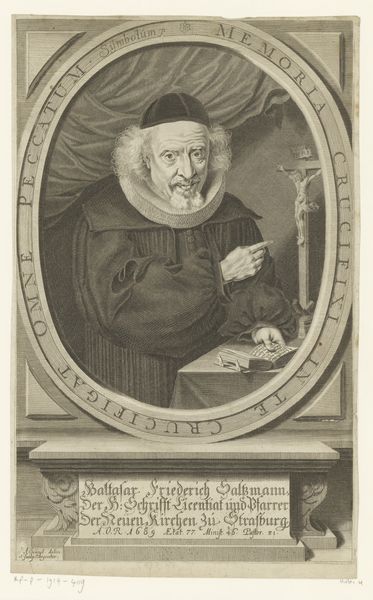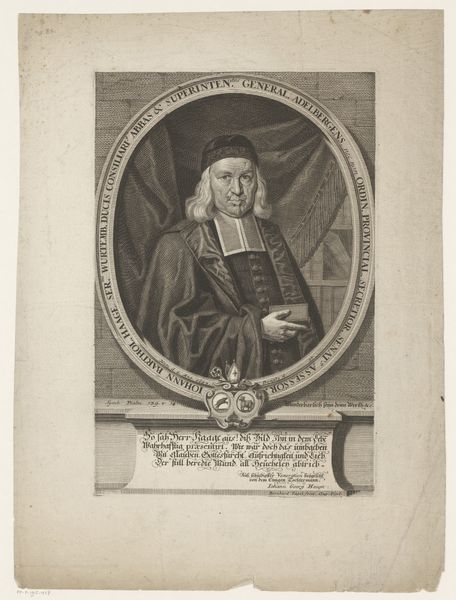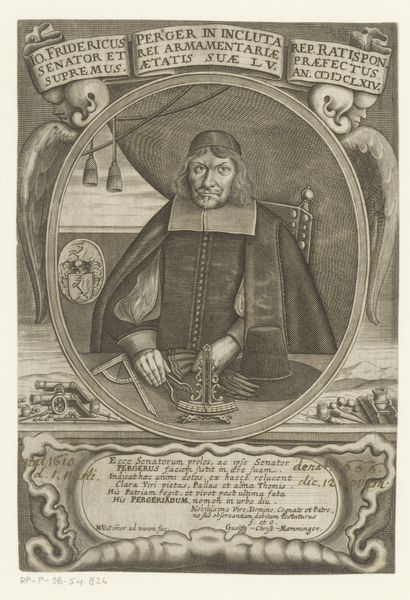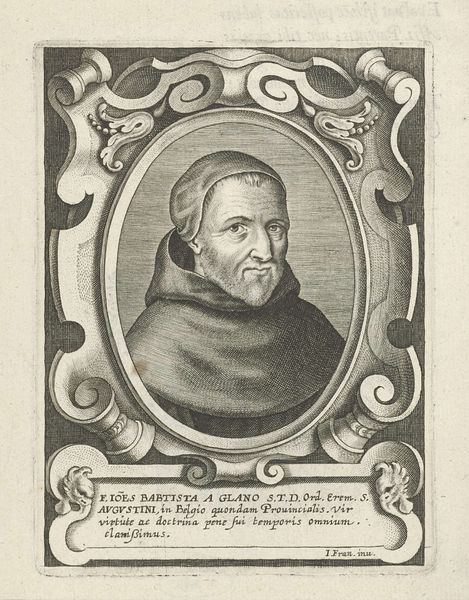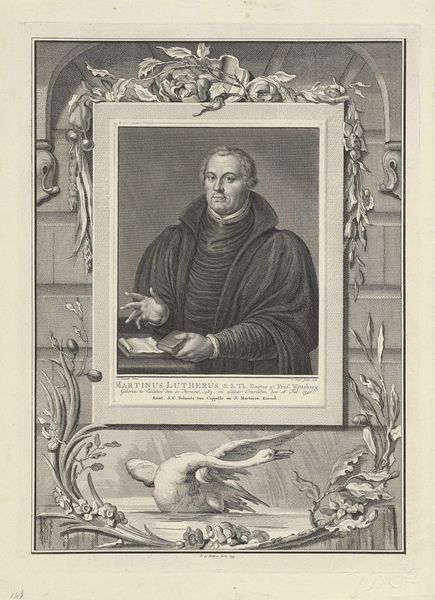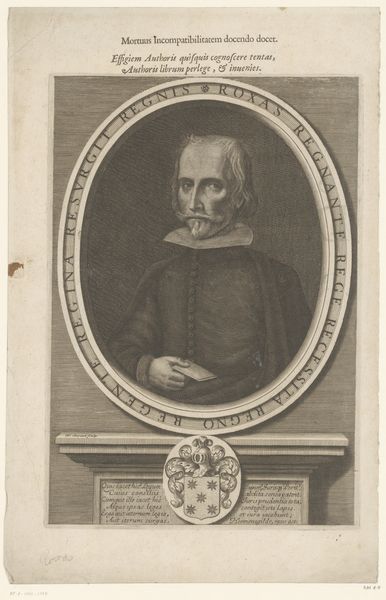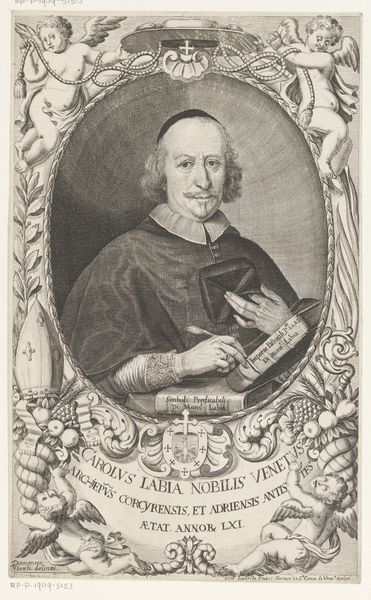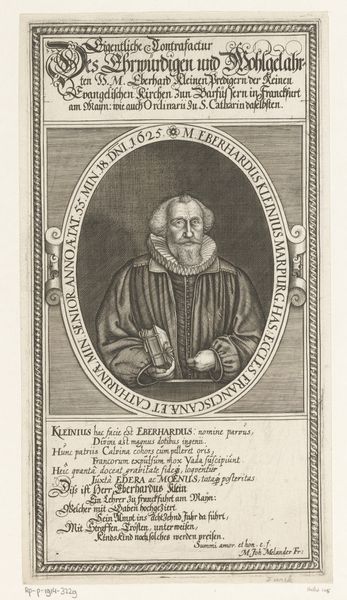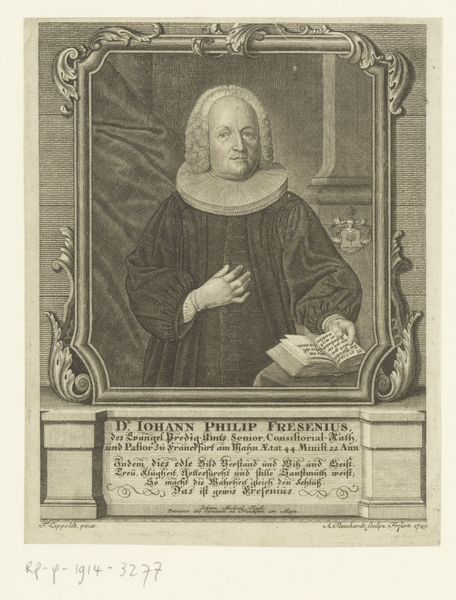
print, engraving
#
portrait
#
baroque
# print
#
history-painting
#
engraving
Dimensions: height 291 mm, width 173 mm
Copyright: Rijks Museum: Open Domain
Editor: So, this is "Portret van Bernhard Sannig," a print from around 1660-1730 by Gerard de Groos. It's incredibly detailed. What really strikes me is the sheer amount of symbolism packed into one image. What do you see in this piece? Curator: Immediately, the arrangement of symbols conveys Bernhard Sannig's world – knowledge and piety are conjoined. Notice the cherubs amidst the academic volumes. These aren't merely decorative; they’re carriers of sacred knowledge. Where do your eyes go first? Editor: I noticed that he's holding a quill and a book, poised to write. And the books behind him suggest a life dedicated to learning. What about the text framing the portrait? Curator: Excellent observation. Consider the Baroque period's love for ornate framing—everything contributes meaning. The cartouches filled with titles point to his scholarly expertise. “Theologia,” “Philosophia”… Each title represents a facet of his intellectual achievements. Do you think that placement, creating a visual frame around Sannig, might tell us something about how the community saw him? Editor: It almost feels like a halo of knowledge! So, it’s not just a portrait; it's a statement about his intellectual and spiritual authority. It definitely immortalizes him. I’m really getting a sense of how intertwined faith and intellect were back then. Curator: Precisely. These symbolic languages encode cultural values. Every element serves a purpose, speaking volumes about the subject and the values of the world he inhabited. Editor: Wow, I will definitely view portraiture differently from now on, paying more attention to the symbols embedded in each portrait. Thank you. Curator: My pleasure. Thinking about these layers enriches not only our appreciation but our cultural memory itself.
Comments
No comments
Be the first to comment and join the conversation on the ultimate creative platform.
